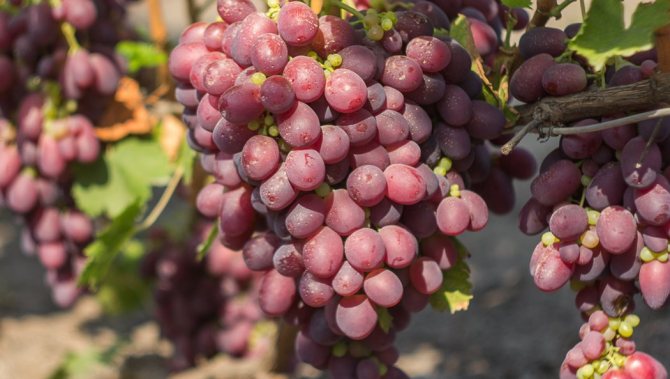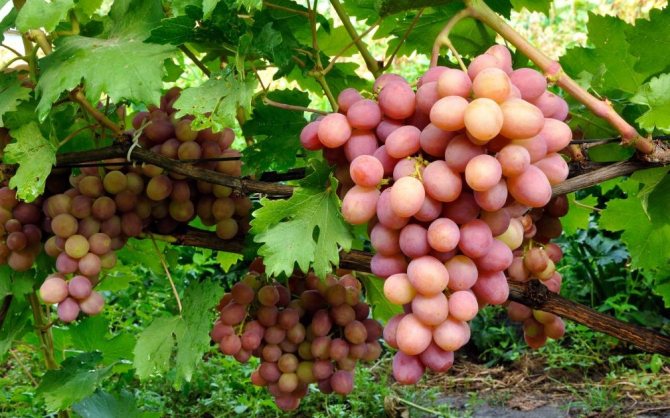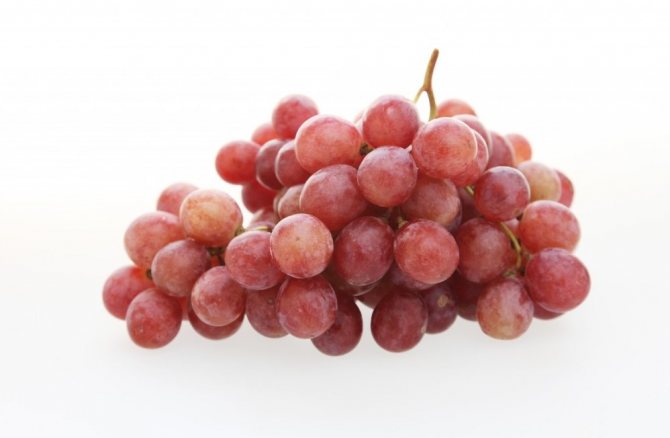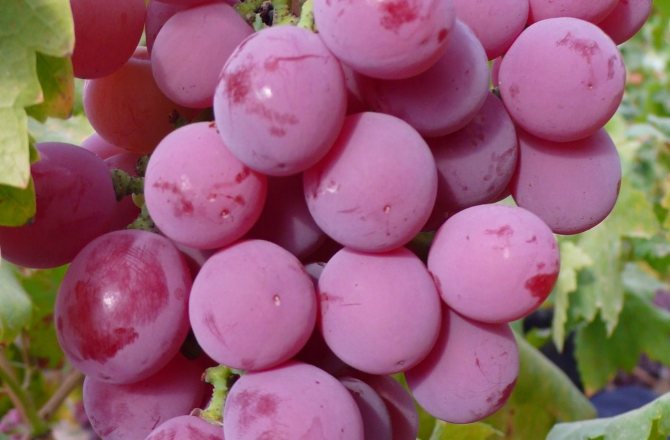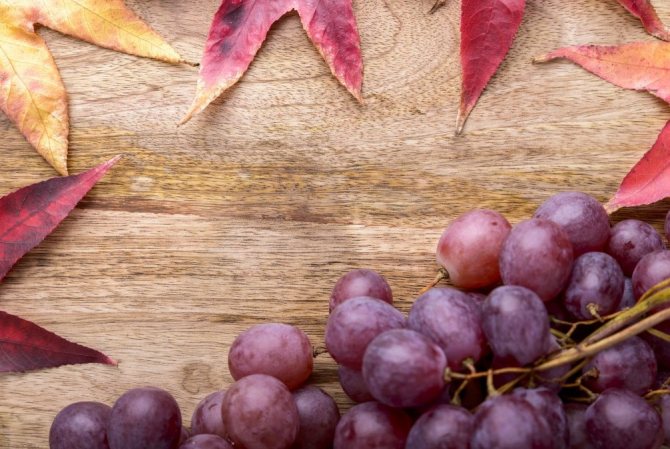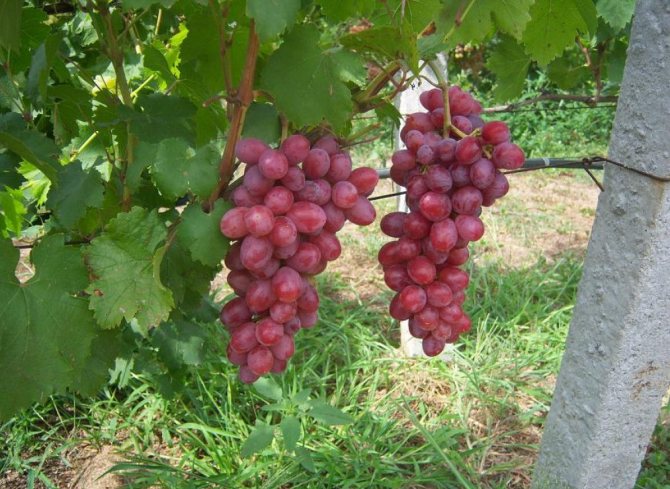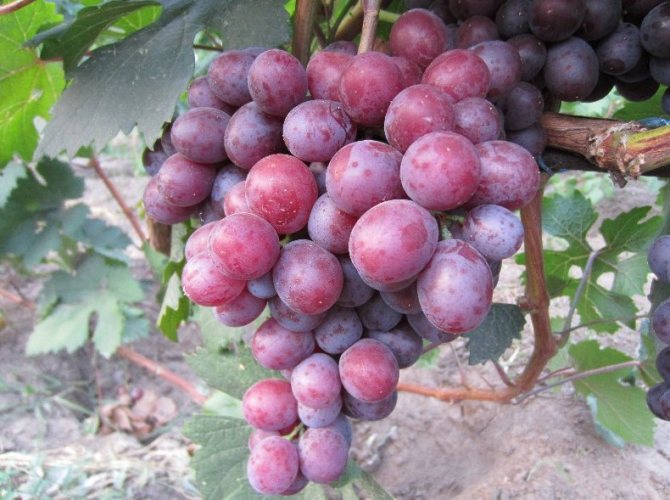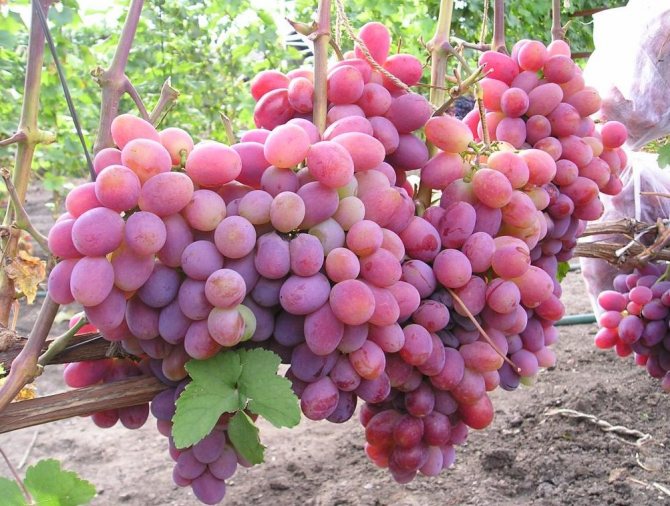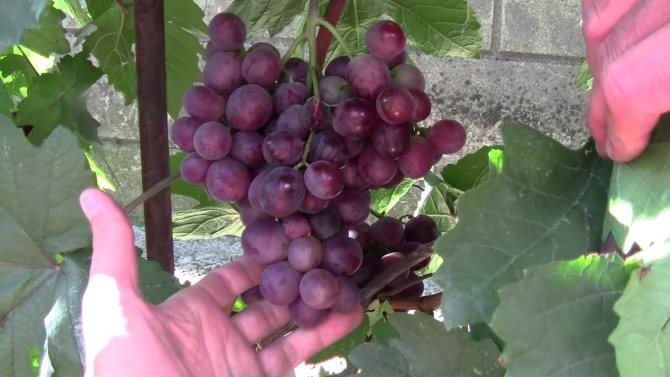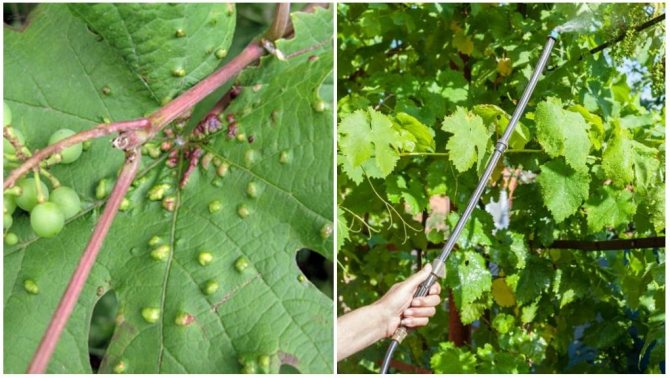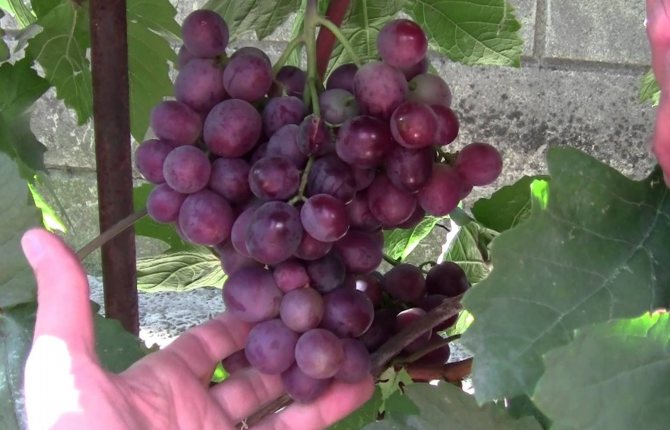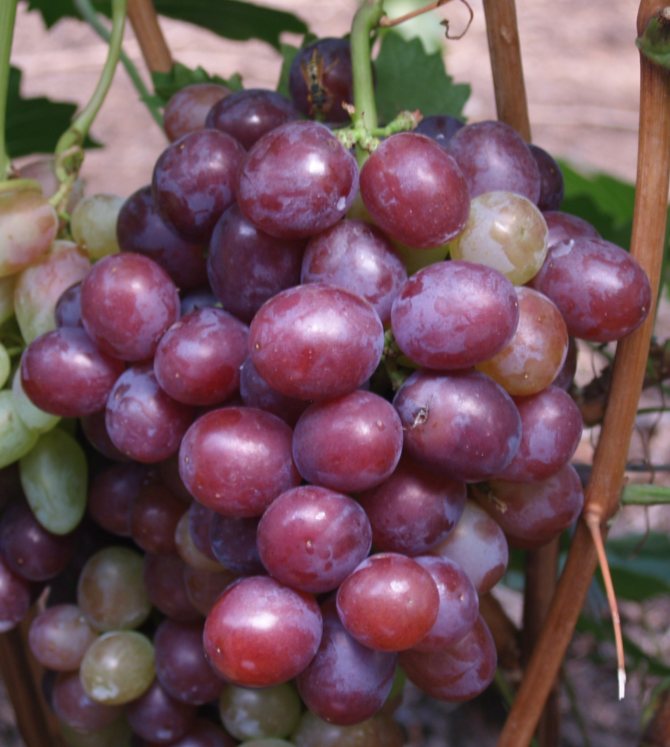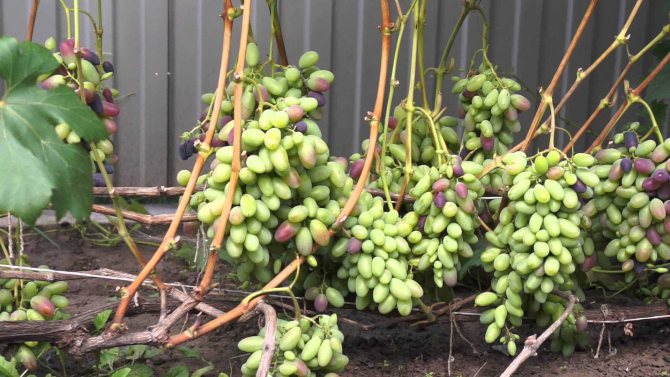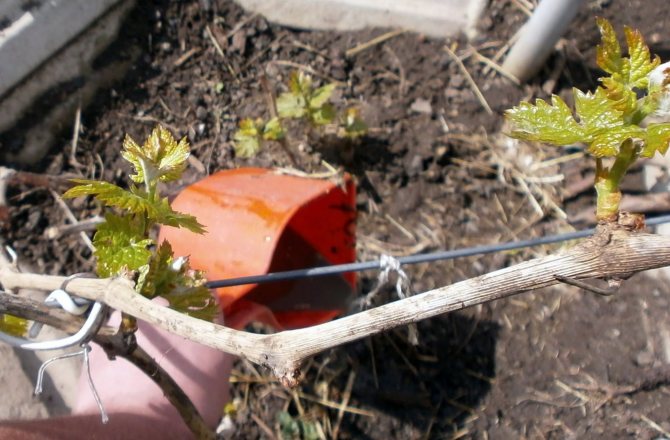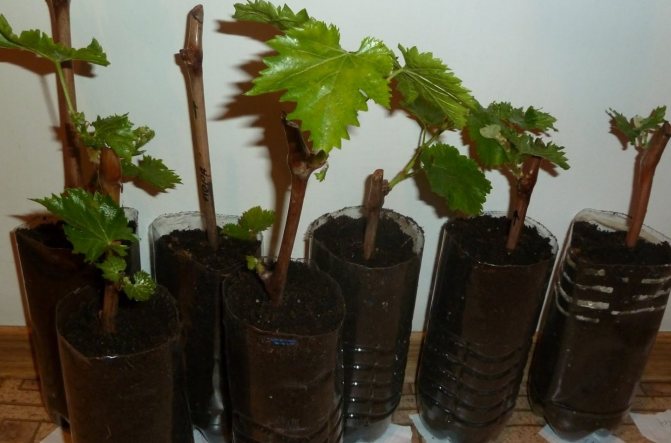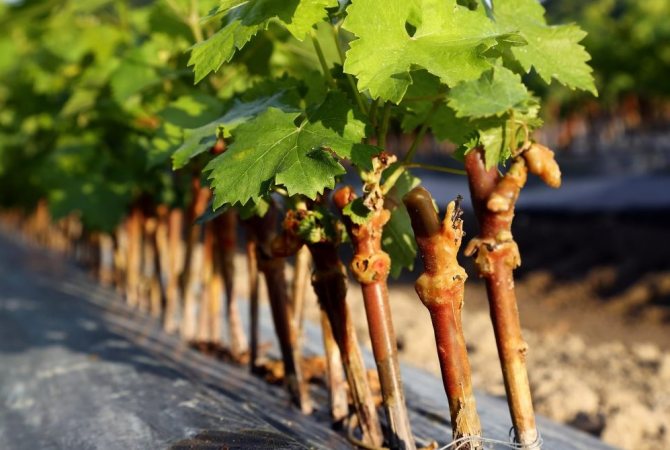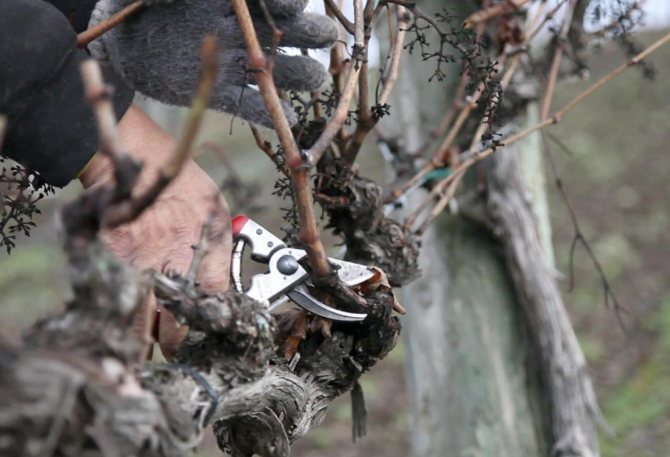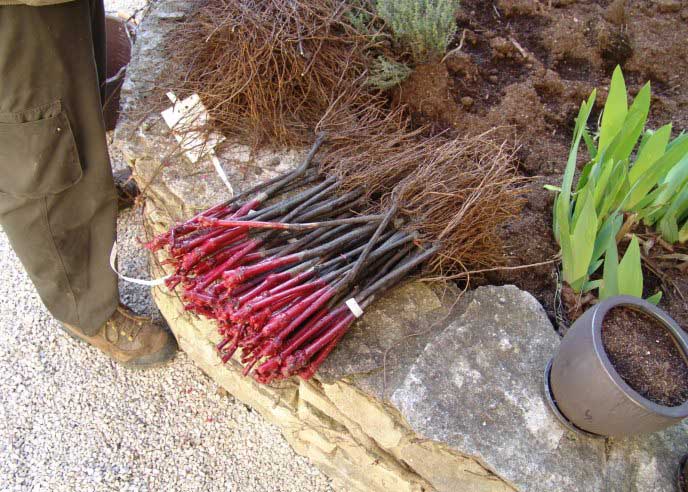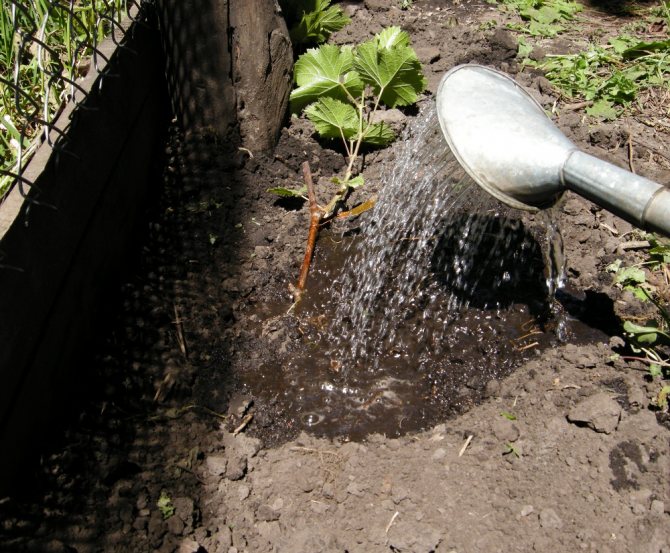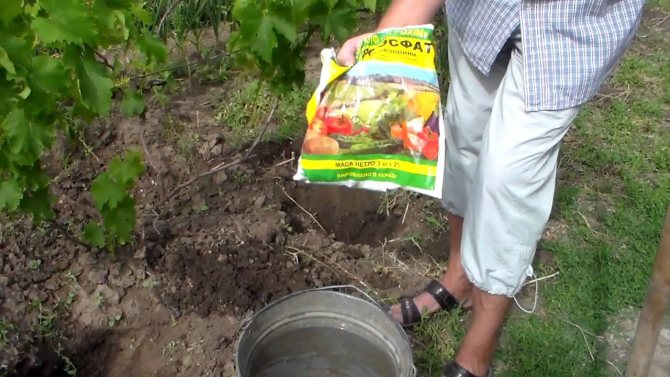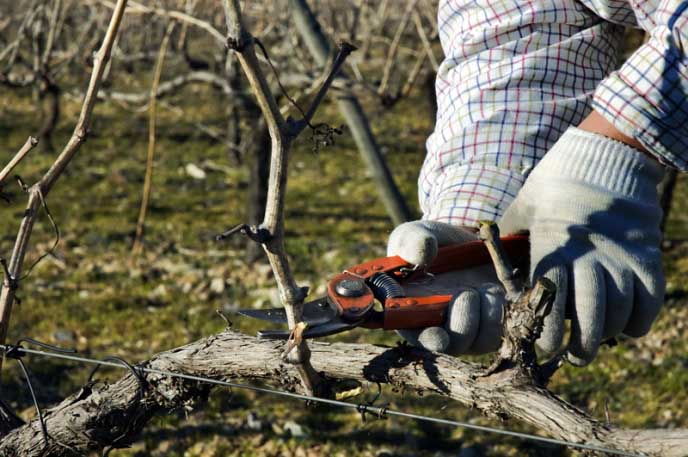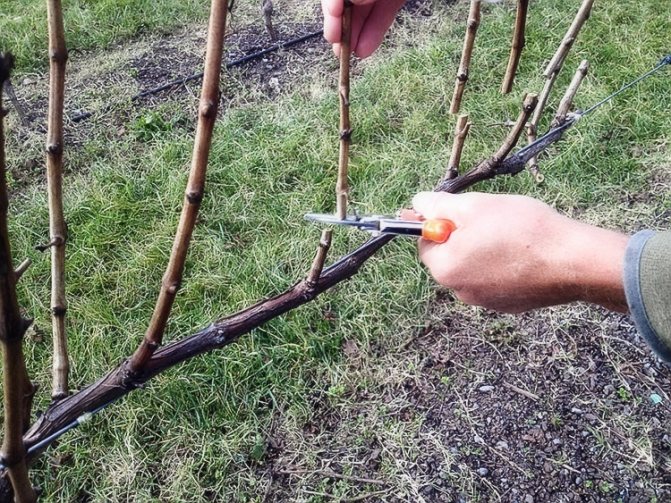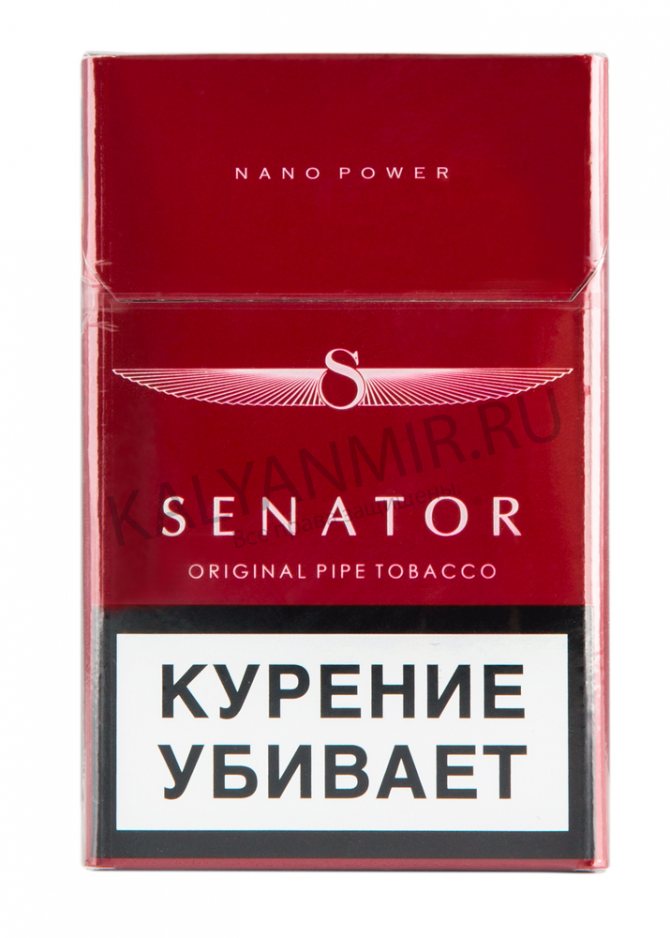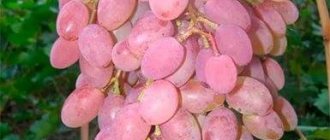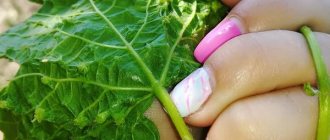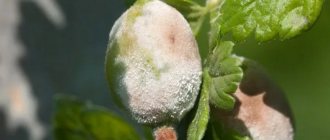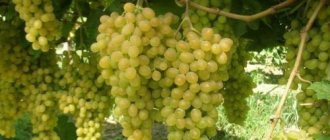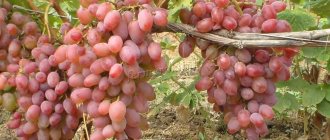Grapes are a unique tasty, healthy, beautiful berry that is loved by both adults and children. Grapes can be eaten raw, dried (raisins), juice is made from it, oil is obtained from seeds, wine, cognac, and vinegar are made from juice. There are many different varieties, one of the famous and worthy is the Senator grape.
Two varieties of Senator grapes were bred. The first was created by E.G. Pavlovsky from the city of Novoshakhtinsk. The second variety was bred by A.V. Burdak in the Dnepropetrovsk region. Both varieties are hybrids and bred at different times by crossing different varieties. The result is varieties of approximately the same taste and quality with slight differences.
History of the name of varieties.
So, "Senator" first appeared about ten years ago and is the result of the work of the famous and one of the most successful Russian breeders E.G. Pavlovsky. For this reason, the variety received another name "Senator" Pavlovsky. This hybrid is obtained from grape varieties Maradona and Gift to Zaporozhye.
"Senator" the second is a hybrid obtained by A.V. Burdak, so you can often find his second name "Senator Burdak". To breed a hybrid, the breeder used the Arcadia and Talisman varieties. Despite the fact that this hybrid has not undergone official research, it can be commercially available. Moreover, the recommendations of the practicing gardeners, the cultivation of this grape, contribute to its rise in popularity.
Grape seedlings offered for sale under the name "Senator" are still more often the "Senator" Pavlovsky variety. In any case, when buying planting material, it will not be superfluous to clarify what color the grapes have. This characteristic is most evident when the two varieties are distinguished.
Shelter for the winter
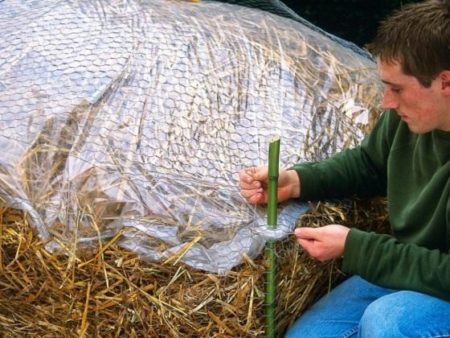
Frost poses a danger not so much to the shoots as to the roots. Therefore, when sheltering, the emphasis is on mulching the earth. In November, straw is laid on dry ground with a layer of at least 3-4 cm. The vine is removed from the trellis and dropped into the straw. The grapes are covered with agrofibre on top of the mulch. Now the culture will survive even a harsh winter with temperatures down to -30 degrees.
Senator "senior" (Pavlovsky).
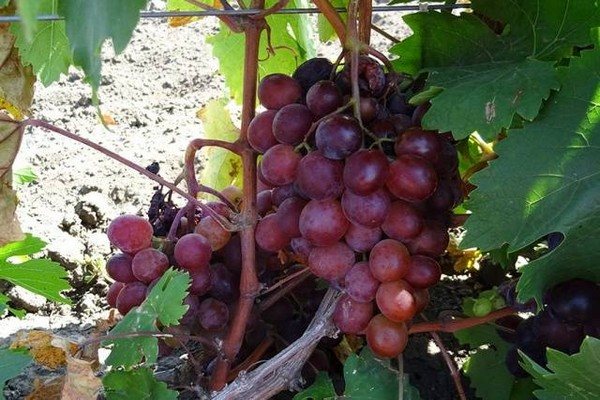

This is a table grape, which means that it has an excellent taste and, first of all, is recommended for fresh consumption. The grapes of this variety are early maturing, that is, the harvest can be harvested in 110 - 125 days. The bunches of grapes are attractive in appearance, the berries are weakly affected by pests and various diseases.
In regions with mild climates, the grapes ripen in late summer.
The bushes are distinguished by active growth, branching, as well as a powerful and long vine.
Saplings of this variety take root easily and quickly gain green mass, so the propagation of grapes is not difficult.
The leaves are characteristic for grapes, but slightly larger, with dark green veins.
The presence of other varieties for pollination of grapes in this case is not required, since the flowers of the plant are bisexual.
The fruits are large, the weight of one berry can be up to 18 g, they are even, of the correct oval shape and burgundy color. The flesh of the fruit is tender and not very dense. The number of seeds depends on climatic conditions and cultivation techniques.By the way, most of us throw away grape seeds when we eat. At the same time, scientific studies have shown that bones contain a whole storehouse of substances and useful elements necessary for the body. And many manufacturers of vitamin complexes increasingly include grape seed extract in their composition.
The peel of the berries is thin, chewable well when eaten fresh. But, at the same time, it is durable, allowing to transport grapes over long distances.
Bunches of grapes are large, resembling a cone in shape. The weight of one bunch, provided optimal conditions for growth, as well as proper care, can be up to one and a half kilograms.
The fruits of this variety are distinguished by a pleasant sweet taste, with a pronounced nutmeg hue.
Despite the fact that the grapes are approved for areas with moderate climatic conditions and regions with mild winters, the plant is able to withstand temperatures down to minus 24 degrees without any shelter. Gardeners who cultivate this variety in areas with lower winter temperatures recommend covering the vine.


Grapes are resistant to pathogenic fungi and infections, and are also weakly susceptible to attacks by insect pests.
As already noted, the berries are well transported and stored for a rather long time without changing the presentation.
The hybrid created by Pavlovsky is undoubtedly a breeder's success. The grape has some disadvantages, however, it has much more advantages, which is confirmed by the growing popularity of the variety.
So, the plant is distinguished by high viability of seedlings and active growth of the vine. Frost resistance, which, as gardeners note, is higher than that declared for this variety. Consistently good yields of large and juicy berries. Ease of growing and easy care of the bushes. Good resistance to diseases and various pests of grapes.
Despite the fact that "Senator" is classified as a table variety, winegrowers successfully use the fruits to prepare wine, which turns out to be aromatic, moderately sweet with hints of nutmeg.
The disadvantages of a hybrid are largely due to growing vines in a climate not suitable for grapes, as well as errors in plant care.
So, for example, the number of minuses includes cracking of fruits during long rainy periods. Inconvenience caused by the need to remove the vine from the support in the autumn-winter period, when growing grapes in regions with cold winters. In addition, according to a number of tasters, the flesh of this variety is rather loose, lacking the “crunch” characteristic of grapes.
Obviously, with such quality characteristics, the demand for this variety remains high, and some unscrupulous sellers take advantage of this. Therefore, it is necessary to purchase planting material in proven and proven garden centers, nurseries or from winegrowers who directly grow this variety, and who have the opportunity to clearly demonstrate all its characteristics.
Reproduction methods
Senator grapes are bred by cuttings, grafting, layering.
See also
Description of Carmenere grapes, planting and care rules
To read
Cuttings
It can be propagated by green or ripe cuttings. In the first case, the procedure is carried out in the spring, cutting cuttings (shanks) with 1-3 eyes, planting them in boxes with sand. The rooted vine is planted for growing in a school.
Lignified cuttings are cut in the fall, planted in a container with wet sand, and sent to the basement for storage. In the spring they are washed in a solution of potassium permanganate, planted in pots with fertile soil. The grown bushes are planted in the ground.
Vaccination
There are several ways to plant grapes.The following is information on performing the procedure for the most common complete cleavage vaccination:
- all shoots are removed on the scion, a horizontal cut of the stem is made;
- a splitter knife is placed in the center, an incision is made to a depth of 3-4 centimeters;
- on the scion, on the side of the lower eye, oblique cuts are made: on the one hand, a deep cut, on the other, they only cut the wood;
- the scion is inserted into the stock so that the layers of the cambium coincide.
The vaccination site is tied with twine, then covered with a bag, which is not very tightly tied to the trunk. After 3 weeks, the harness is removed.
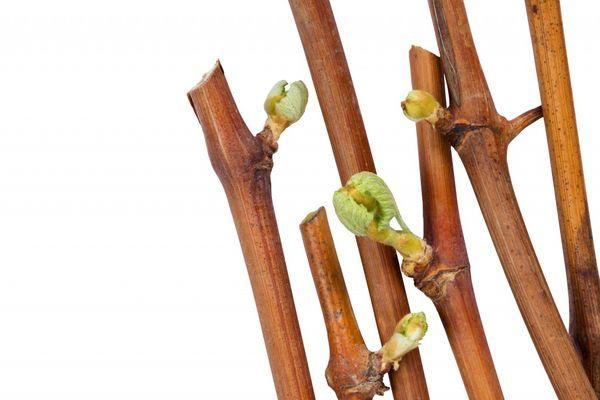

Layers
The procedure for reproduction by layering is performed as follows:
- a shallow groove is pulled out near the grape bush;
- in spring, the leaves are removed from a long vine, bend it to the dug hollow, and attached with a bent wire;
- water, cover the shoot with earth.
Throughout the summer, the place of contact of the vine with the ground is watered, freed from weeds. When the stem takes root, and young shoots appear on it, it is dug up, and new bushes are planted separately.
Note! It is possible to separate the grape cut from the mother plant only after its rooting, and the development of young bushes on it.
Senator "junior" (Burdaka).
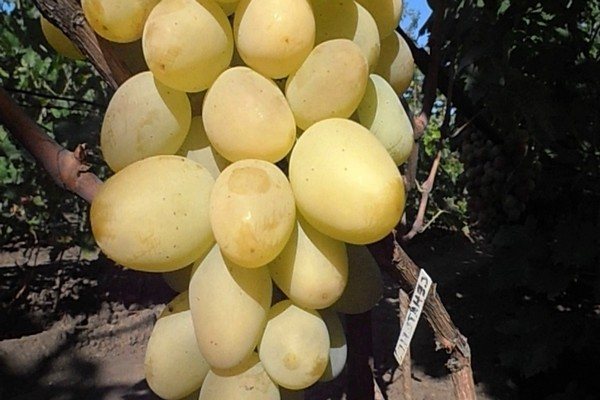

Since this variety began to be cultivated quite recently, reviews about it have appeared only recently.
Recall that experimental tests have not yet been passed, and for this reason the variety is not in the relevant registers, but it managed to deserve a positive assessment of many gardeners and private winegrowers.
The vigorous grape bush, the vine actively grows, forming a powerful crown.
Fruits are oval in shape, even, have a green color with a yellowish tinge, not prone to pea. The average weight of a bunch is up to 1200 kg, the shape is conical. The berries are tightly adjacent to each other, while the bunch is not full.
Grapes ripen early, the growing season does not exceed 120 days.
The hybrid is distinguished by good frost resistance, as well as immunity to various infections that affect the vine.
The pulp of the fruit is juicy, the taste is sweet, with a slightly noticeable hint of nutmeg.
The grapes tolerate transportation and storage well. The market value of the variety is also high.
The productivity of the bush depends on the growing conditions, as well as the correct and timely care of the vine. Yet, according to most gardeners, the variety is characterized by high yields.
The size of the grapes of this variety is somewhat smaller than that of "Senator" Pavlovsky, and this is another difference between the varieties in addition to the different color of the berries.
Characteristics
This "dignitary" tolerates frosts very well (although it requires that he be sheltered) - up to -23-24 degrees Celsius. She is also afraid of a strong sun - the bunches need to be covered with leaves so that the berries do not get sunburn. Not afraid of fungal attacks.
The Black Raven, Memory of Dzheneyev and Kishmish Jupiter differ in the same signs.
According to farmers' reviews, phylloxera is also not afraid. Well compatible with most rootstocks, loves additional care - watering, fertilizing. The ripening of the shoots is very good, almost over the entire length. Wasps, according to gardeners, is also practically not beaten.
Agrotechnics of grapes.
In addition to the fact that both "Senators" have similar characteristics, the growing conditions and the rules of vine care for these varieties are also no different.
The soil for planting grape seedlings must be loose and breathable. For the palatability of the fruit, it is important that the grapes receive the maximum amount of sunlight. Therefore, if possible, it is better to choose the site on the south side or slightly to the west. Some growers grow vines on slopes that are better lit and warm. In this case, it is more correct to place the planting across the slope, so you will prevent the washing out of the fertile soil layers during the rains.Also, it is important to remember that constant wind and drafts negatively affect the development of the vine and its yield.
Planting seedlings can be done in trenches or holes. The length, width and depth of the planting hole should be at least 60 cm. In the case of planting grapes in trenches, one should be guided by the same dimensions.
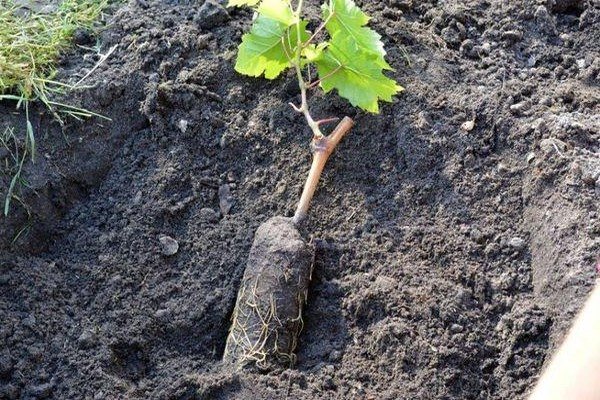

Experts advise to prepare a site for planting grapes in advance. When planting seedlings in spring, preparatory measures are carried out in the fall. It should be borne in mind that the minimum period that must be observed from the moment of digging a hole or trench to planting cuttings in them is two weeks.
In the case where groundwater occurs close to the surface, drainage must be provided. To do this, crushed stone, expanded clay or crushed brick is poured at the bottom of the hole, and then a layer of coarse sand. Next comes the fertile soil, which is poured into a layer approximately 45-50 cm thick, mixed with organic matter or a complex of mineral substances. The grape stalk is placed in the center of the planting hole, carefully adding the soil. After that, the earth is lightly tamped and the plantings are watered.
Some gardeners use a clay shaker to preserve the roots of plants before planting, after cutting them a little and removing the damaged shoots.
Recommendations for growing a hybrid
After reading the description of the Senator grape variety, the winegrower needs to learn how to plant and grow this amazing hybrid. To ensure high yields, growth and development of the variety, planting must be carried out in fertile and nutritious soil, on a side well heated by the sun. Do not forget about the wind rose in the area of planting: drafts and cold winds will not have the best effect on the Senator.
The preparatory stage for the planting pit is a key moment for the development of the root system of the grape and its further growth. Therefore, it is worth considering the following recommendations:
- preparation of the landing site should be carried out in advance: 1 month or a season before landing;
- the day before planting, it is required to soak the roots in any growth stimulator (for example, in potassium permanganate);
- for better development of grapes, it is better to cut the weak roots of the seedling and plant in a closed system (for example, in a clay or earthen mash);
- 1.5 meters is the required distance between planting pits for the Senator variety;
- a drainage layer of expanded clay or fine gravel will protect the roots from washing out of groundwater;
- the next flooring is mineral fertilizers;
- after feeding, it is necessary to cover the root system with soil.
It clearly demonstrates how a seedling is planted, a photo of Senator grapes, a description of this process is presented above, so it will be difficult to make a mistake.
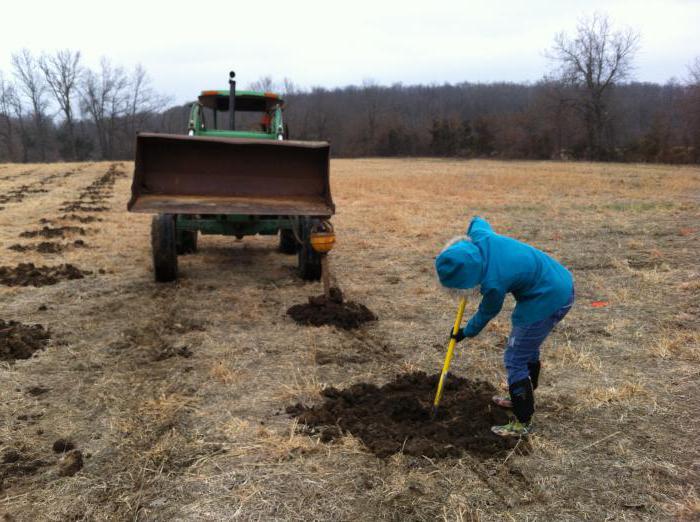

After all the manipulations, the soil must be thoroughly compacted and moistened.
Vine care.
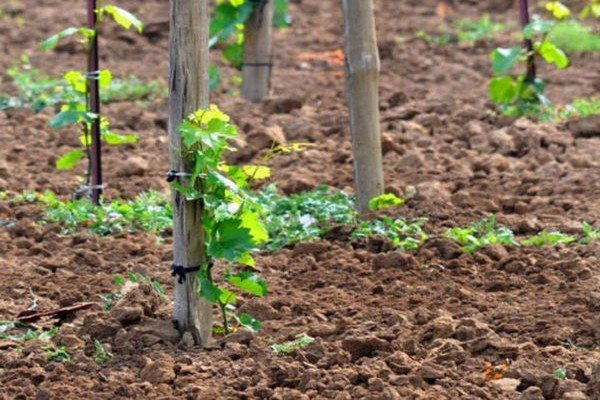

Stable and high yields can only be expected with proper grape care.
In the case of the varieties in question, caring for the bushes does not present any difficulties.
So, regular watering is more necessary for young seedlings, during the period of their rooting and adaptation. For adult plants, it is enough to water in a drought, when the weather is so hot that the soil cracks. In general, in the case of this crop, it is not recommended to be zealous with watering, since waterlogging can lead to cracking of the fruits and their rotting.
The soil of the trunk circle is recommended to be mulched. In summer, this will protect the root system from overheating, and in winter it will serve as a shelter. If humus is used as mulch, then the plant will also receive fertilizers.
Grapes are good for any feeding, including: rotted manure, poultry droppings, minerals.However, at various stages of the development of the bush, experts advise to apply certain types of fertilizers.
So, before flowering, grape bushes are sprayed with a solution of boric acid with the addition of zinc sulfate. When the so-called eyes of the grapes open, the bush is fed with ammonium nitrate. After the end of flowering, nitrogen-phosphorus-potassium fertilizers are applied. When the berries begin to ripen, superphosphates and potassium sulfate are used. And if you notice the softening of the berries, then the grapes must be fertilized with phosphate-containing substances.
Vine care includes mandatory pruning. It is better to carry out this procedure in the spring. For this variety, both medium pruning is suitable, for 5-8 eyes, and long - for 10-15. If pruning is carried out in the fall, then it is recommended to leave a few more eyes, in case they freeze. In addition, you need to remember about the formative pruning, otherwise the vine will simply break off under the weight of large bunches. The optimal number of them on each shoot is one or two.
Despite the resistance of both varieties to disease, you shouldn't risk neglecting just a few preventive treatments. The first spraying is carried out at the stage of appearance of 3-5 leaves. For these purposes, use a solution of "Ridomil" - a fungicide that acts on a whole range of diseases. During the opening of the bushes, they are treated with iron vitriol. They are also sprayed with bushes after the leaves fall. While the ovaries are still the size of small peas, the plant is treated with the fungicides "Acrobat" and "Topaz".
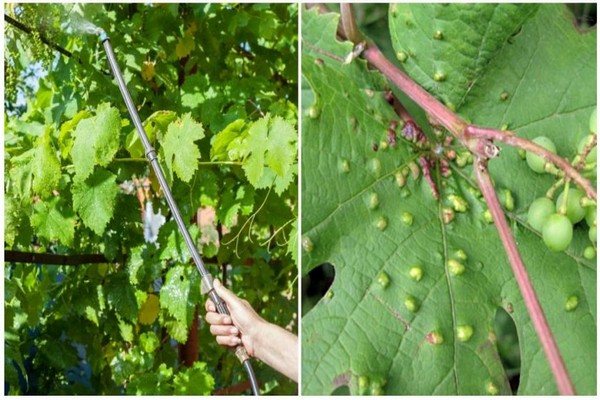

Landing rules
For abundant fruiting in season, the grapes must be properly planted. This is done in the spring, not earlier than April, but not later than the onset of summer. For planting, seedlings with unblown buds are used. The procedure is as follows:
- holes are dug in the ground with a depth of 1 m, the distance between the holes is at least 2 m;
- fall asleep in the pit a 15-centimeter layer of gravel or any drainage;
- add a bucket of black soil to each hole;
- the roots of the seedling are inserted into the ground, the root collar is not added dropwise;
- water the ground with 10-15 liters of water.
When the water completely goes into the ground, the soil is loosened a little, and then crushed. To retain moisture in the soil, the soil is mulched with dry sawdust or straw.
On a note!
You can grow grapes not only from seedlings, but also seeds.
Reviews of gardeners.
Unfortunately, among the gardeners who shared the reviews, there were no ones who would grow grapes of both varieties and could give their comparative characteristics.
However, each of the hybrids separately deserved a positive assessment.
Many people fell in love with grapes of the "Senator" Pavlovsky variety for their sweet taste, well combined with notes of nutmeg.
The variety "Senator" Burdak turned out to be much more difficult to find. Those gardeners who managed to acquire planting material note the rapid rooting of seedlings and their active growth. At this stage, the grape bush shows good development, and the taste can be judged in a couple of years, when the grapes give the first harvest.
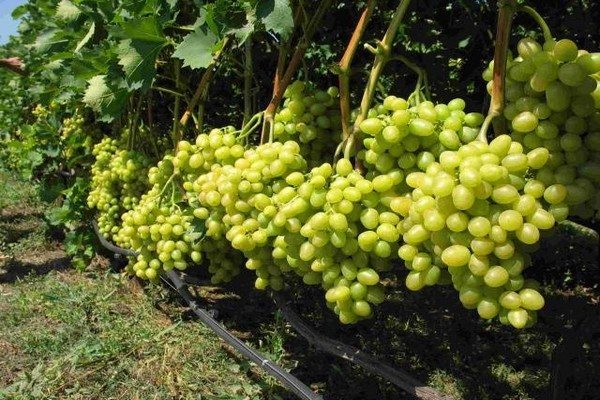

Thus, despite the similar characteristics of the varieties, they are unlikely to compete with each other, since they differ in the main thing - in taste. However, both varieties, of course, are worthy of choosing them, especially since even novice gardeners and winegrowers can grow them.
Diseases and pests
Senator grapes are rarely affected by typical crop diseases. In order to prevent the appearance of diseases and pests, it is necessary to carry out preventive spraying with fungicides and insecticides several times per season.
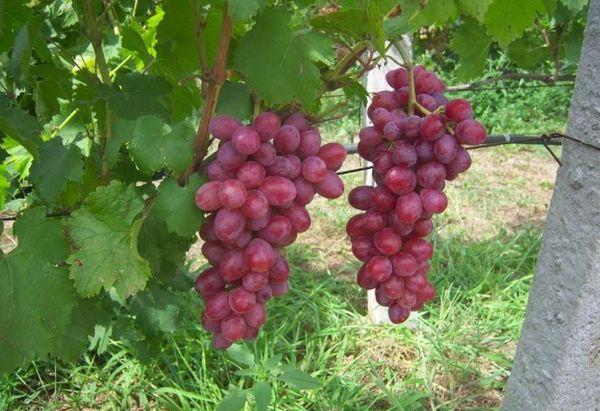

Mites
It is the most common pest of the Senator grape variety. To prevent its appearance, leaf plates are sprayed on both sides with drugs, for example, Bi-58, Kleschevit.
Bacterial cancer
The risk of developing bacterial cancer on grape bushes is not excluded. There is no cure for this disease, so the gardener must direct all his efforts to prevent it.To do this, you need to cut off the shoots that thicken the crown, and also regularly feed the bushes with mineral fertilizers. Infected plantings are uprooted and burned.
Important! It is forbidden to spray grapes with chemicals during flowering, as this may kill bees collecting nectar.
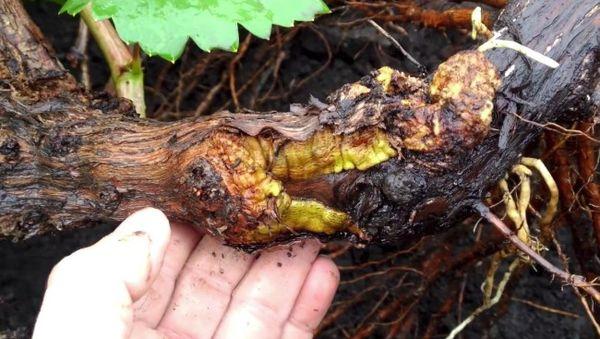

Brand "Grand Virginia"
Tobacco for Grand Virginia cigarettes is harvested in Virginia and processed with high quality. The products are packaged in black cardboard boxes, and the classic ones are packaged in a metal box. The peculiarity of the brand is the absence of flavors. The products are intended for true connoisseurs of pure tobacco smoke, and high cost and stylish design are a sign of status. The names of the main types of "Grand Virginia":
- classic (0.7 mg, 8 mg);
- nano (0.3 mg, 4 mg);
- nano power (0.5 mg, 5 mg);
- slims (0.5 mg, 5 mg).


